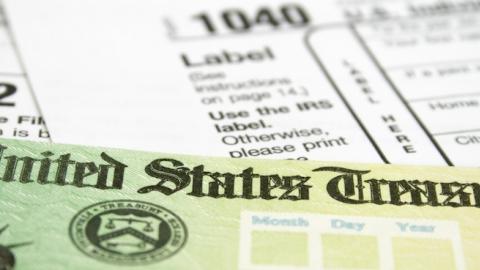The Republican presidential hopefuls are all offering tax plans that would boost the economy, which is encouraging, given that U.S. growth has slowed to a trickle over the past decade. The question is whether any of these proposals are politically viable.
Most are vulnerable to two lines of attack: Their biggest beneficiaries would be the top 1%, and they would substantially increase the $19 trillion national debt. Republicans must be able to answer these charges—and build widespread political support.
I would invite them to take a look at my Main Street Tax Plan, which was released by the Hudson Institute on Sunday. The proposal would give a tax cut to nearly all Americans: $2,153 to a single person making $60,000; $2,020 to a couple making $80,000; and $2,055 to a family of four making $95,000. The biggest beneficiaries would be middle-class Americans, who would fare twice as well as the top 1%.
The Main Street Tax Plan would expand the U.S. economy by $2 trillion within a decade, according to the nonpartisan Tax Foundation. That is in the ballpark of the growth generated by the Reagan and Kennedy tax cuts. Moreover, this tax cut would raise revenues by $679 billion over a decade, as taxes on increased growth would exceed lost revenues.
The Tax Foundation found that the tax plans of Donald Trump,
Sen. Ted Cruz, Sen. Marco Rubio and Ben Carson would all benefit the top 1% more than the median American. Three of these four plans would increase the national debt by more than $2 trillion—Mr. Trump’s by $10 trillion, Mr. Carson’s by $2.5 trillion and Sen. Rubio’s by $2.4 trillion, even after accounting for economic growth. Sen. Cruz’s plan would avoid that result only by implementing a new value-added tax.
The Main Street Tax Plan also beats out the Republican blueprints in terms of bang for the buck: 7% of increased GDP growth over 10 years for every $1 trillion in tax cuts. Sen. Cruz’s would generate 3.8%, Mr. Carson’s 2.8%, Sen. Rubio’s 2.5% and Mr. Trump’s less than 1%.
My plan would allow full expensing of capital investments, lower the corporate tax rate to 25%, and reduce the top individual rate to 33%. It would eliminate the business tax deduction for interest paid, thereby ending the government preference for debt-financing.
The proposal would also focus on the well-being of typical Americans, first by adding a 20% tax bracket. In the current tax code, the biggest marginal-rate increase—to 25% from 15%—kicks in at $47,751 for individuals and $95,501 for couples. That hits many people right when they are starting to get ahead and perhaps thinking about getting married or having children. My plan would convert the first quarter of that 25% bracket to a 20% bracket, thus providing tax relief for millions of middle-class Americans.
The plan would streamline the code by reducing the number of different federal taxes. Americans must pay income tax, Social Security payroll tax and Medicare payroll tax. Social Security is largely a pay-in-for-yourself program, and so the reason for that levy is clear. But there is no justification for the Medicare payroll tax. It covers barely over a third of Medicare’s costs and functions as a stealthy second income tax. My plan would scrap it and fund Medicare through general revenues. The $679 billion in additional revenue the plan would raise over a decade would leave more money available for Medicare, not less.
This plan would maintain the deduction for charitable donations and the mortgage-interest deduction (for one home); it would eliminate almost all other deductions, including for state and local taxes, except those for business expenses. And because people shouldn’t view April 15 as a payday, it would not let anyone’s income taxes go negative, apart from an Earned Income Tax Credit or health-care tax credit, as other tax credits would be made nonrefundable. The plan would also do three things to end the marriage penalty: eliminate the head-of-household filing status; stop income-testing the child tax credit, which the plan would cut in half and supplement with a deduction; and make the income range of couples’ tax brackets double that of singles’.
Republicans have struggled to come up with pro-growth tax plans that plainly benefit the typical American. Sens. Marco Rubio and Mike Lee tried, but they ended up offering handouts to some at the expense of others. Under the Rubio-Lee plan, a family of six making $100,000 would pay no income tax and get a $3,000 income-tax refund—which a single person making $20,000 would have to help underwrite. Sen. Rubio, departing from Sen. Lee, also proposes income-testing his new tax credits, resulting in marginal income-tax rates of up to 64% for some taxpayers as those credits phase out.
The Main Street Tax Plan focuses on the typical American without picking winners and losers. That is the only politically potent way to unleash prosperity and restore the nation to fiscal sanity.



















